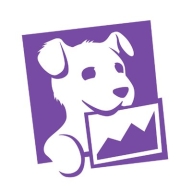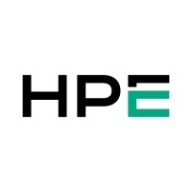

Datadog and HPE OneView compete in the infrastructure management and monitoring space. Datadog appears to have the upper hand due to its extensive integration capabilities and real-time insights.
Features: Datadog offers extensive dashboard customization, seamless integration with AWS, and centralized data views that provide actionable insights from logging. HPE OneView excels in infrastructure management, centralizing server, storage, and network configurations to reduce administrative complexity.
Room for Improvement: Users suggest that Datadog could enhance API consistency, frontend integration, and improve incident management features. They also express a need for better notification systems and clearer pricing structures. For HPE OneView, users recommend expanding device support, enhancing speed and the user interface, as well as improving alert management and monitoring scope.
Ease of Deployment and Customer Service: Datadog offers flexible deployment across private and hybrid clouds with generally good support, though regional support can improve. It provides a straightforward setup but managing costs as usage grows can be challenging. HPE OneView is more focused on on-premises deployments, centralizing management for HPE hardware, noted for its simplicity and comprehensive support but needing better integration with non-HPE systems.
Pricing and ROI: Datadog's pricing model is reasonable but can escalate quickly with usage, leading to calls for clearer cost predictions. It follows a pay-as-you-go model valued for its extensibility, yet users desire more competitive pricing against emerging competitors. HPE OneView offers straightforward pricing, particularly advantageous when bundled with hardware, though seen as high for extensive server monitoring. Users find Datadog provides strong ROI through advanced monitoring, while OneView's ROI is linked to its efficiency in traditional IT infrastructure management.
Previously we had thirteen contractors doing the monitoring for us, which is now reduced to only five.
Datadog has delivered more than its value through reduced downtime, faster recovery, and infrastructure optimization.
I believe features that would provide a lot of time savings, just enabling you to really narrow down and filter the type of frustration or user interaction that you're looking for.
When I have additional questions, the ticket is updated with actual recommendations or suggestions pointing me in the correct direction.
Overall, the entire Datadog comprehensive experience of support, onboarding, getting everything in there, and having a good line of feedback has been exceptional.
I've had a couple instances where I reached out to Datadog's support team, and they have been really super helpful and very kind, even reaching back out after resolving my issues to check if everything's going well.
The customer service and support have been responsive.
I would give the quality of HPE OneView's technical support an eight out of ten rating, indicating good customer service and support in my opinion.
The technical support for HPE OneView rates as an 8 on a scale from 1 to 10, where 1 is the worst and 10 is the best.
Datadog's scalability has been great as it has been able to grow with our needs.
We did, as a trial, engage the AWS integration, and immediately it found all of our AWS resources and presented them to us.
Datadog's scalability is strong; we've continued to significantly grow our software, and there are processes in place to ensure that as new servers, realms, and environments are introduced, we're able to include them all in Datadog without noticing any performance issues.
HPE OneView is highly scalable, especially useful for organizations with large infrastructures.
HPE OneView is a scalable solution since you can integrate any number of servers based on your license.
Scalability is fine as we can add Synergy frames and extend many frames as needed.
Datadog is very stable, as there hasn't been any downtime or issues since I've been here, and it's always on time.
Datadog seems stable in my experience without any downtime or reliability issues.
These incidents are related to log service, indexes, and metric capturing issues.
The stability of the blades is concerning; we have frequent issues with blades having memory or power issues.
HPE OneView is a stable solution that works efficiently.
It supports unified monitoring effectively but may have areas for enhancement.
It would be great to see stronger AI-driven anomaly detection and predictive analytics to help identify potential issues before they impact performance.
The documentation is adequate, but team members coming into a project could benefit from more guided, interactive tutorials, ideally leveraging real-world data.
In future updates, I would like to see AI features included in Datadog for monitoring AI spend and usage to make the product more versatile and appealing for the customer.
The upgrade process is lengthy, requiring careful planning as we cannot match ESXi versions without aligning OneView first, leading to delays.
I believe the prices of HPE OneView should be reduced, as it is quite expensive.
From the dashboard and reporting perspective, HPE OneView could be improved by having multiple modules rather than just a single customization option.
The setup cost for Datadog is more than $100.
Everybody wants the agent installed, but we only have so many dollars to spread across, so it's been difficult for me to prioritize who will benefit from Datadog at this time.
My experience with pricing, setup cost, and licensing is that it is really expensive.
Customers need to pay a substantial amount for the licenses, especially when monitoring a large number of servers and storages.
Our main concern is managing expenses related to the VMware licensing model which affects blade usage.
Our architecture is written in several languages, and one area where Datadog particularly shines is in providing first-class support for a multitude of programming languages.
Having all that associated analytics helps me in troubleshooting by not having to bounce around to other tools, which saves me a lot of time.
Datadog was able to find the alerts and trigger to notify our team in a very prompt manner before it got worse, allowing us to promptly adjust and remediate the situation in time.
I can monitor everything in one view, which has significantly improved operational efficiency for us.
The ease of management with HPE OneView is excellent.
One of the best features of HPE OneView is that you get a complete architecture with a single click.
| Product | Market Share (%) |
|---|---|
| Datadog | 5.0% |
| HPE OneView | 1.4% |
| Other | 93.6% |


| Company Size | Count |
|---|---|
| Small Business | 80 |
| Midsize Enterprise | 46 |
| Large Enterprise | 95 |
| Company Size | Count |
|---|---|
| Small Business | 22 |
| Midsize Enterprise | 15 |
| Large Enterprise | 51 |
Datadog integrates extensive monitoring solutions with features like customizable dashboards and real-time alerting, supporting efficient system management. Its seamless integration capabilities with tools like AWS and Slack make it a critical part of cloud infrastructure monitoring.
Datadog offers centralized logging and monitoring, making troubleshooting fast and efficient. It facilitates performance tracking in cloud environments such as AWS and Azure, utilizing tools like EC2 and APM for service management. Custom metrics and alerts improve the ability to respond to issues swiftly, while real-time tools enhance system responsiveness. However, users express the need for improved query performance, a more intuitive UI, and increased integration capabilities. Concerns about the pricing model's complexity have led to calls for greater transparency and control, and additional advanced customization options are sought. Datadog's implementation requires attention to these aspects, with enhanced documentation and onboarding recommended to reduce the learning curve.
What are Datadog's Key Features?In industries like finance and technology, Datadog is implemented for its monitoring capabilities across cloud architectures. Its ability to aggregate logs and provide a unified view enhances reliability in environments demanding high performance. By leveraging real-time insights and integration with platforms like AWS and Azure, organizations in these sectors efficiently manage their cloud infrastructures, ensuring optimal performance and proactive issue resolution.
HPE OneView is your infrastructure automation engine to simplify operations, increasing the speed of IT delivery for new applications and services. Through software defined intelligence, HPE OneView brings a new level of automation to infrastructure management by taking a template driven approach to provisioning, updating, and integrating compute, storage, and networking infrastructure. Designed with a modern, standard-based API and supported by a large and growing partner ecosystem, HPE OneView also makes it easy to integrate powerful infrastructure automation into existing IT tools and processes. Take command with HPE OneView to deploy infrastructure faster, simplify operations and increase productivity.
HPE OneView innovations provide you the industry’s best infrastructure management experience, simplifying operations for HPE BladeSystem, HPE ProLiant servers, 3PAR storage, HPE Networking and HPE ConvergedSystems.
We monitor all IT Infrastructure Monitoring reviews to prevent fraudulent reviews and keep review quality high. We do not post reviews by company employees or direct competitors. We validate each review for authenticity via cross-reference with LinkedIn, and personal follow-up with the reviewer when necessary.